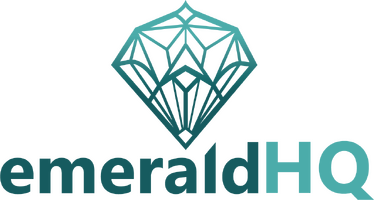
You don’t need to be an HR expert to hire someone. That’s the myth most small business owners believe - right up until their DIY hiring system starts costing them time, money and credibility.
Now I want to be clear - there is NOTHING wrong with DIY if that’s what fits your budget, capacity and knowledge. We literally offer templates, guides and masterclasses as part of a DIY arm of our business, and we’re always expanding.
But it’s important to know when something is out of your depth that you can’t DIY it (or shouldn’t be).
Here’s how it goes:
You get busy. You realise you need help. You throw up an Instagram post or ask your group chat. You find someone who seems keen and available. You trial them for a few hours. They’re “good enough.” You onboard them over text messages and gut feelings. And a few weeks later, things start to unravel.
They’re not taking initiative. Deadlines are slipping. Communication is vague. You’re frustrated, they’re confused, and you’re both wondering what went wrong.
Spoiler: It wasn’t the person. It was the process.
Hiring without a process is like building a house with no plans. You might get walls up, but it’s not going to be strong, scalable or safe. And when you’re building a business - a real business with clients, money, risk and people - you can’t wing it anymore.
Here’s why process is everything when it comes to hiring, especially in small business.
1. Gut instinct is not a hiring strategy
Women in business are intuitive. We’re emotionally intelligent. We can read a room and spot energy shifts before they happen. And that’s a gift - but it’s not a strategy.
Hiring on gut alone means you’re making critical decisions based on vibes. And vibes are not evidence. They’re not data. They’re not repeatable. What felt right once might not feel right next time, and that’s how you end up with inconsistency, risk and regret.
When you hire with process, you’re using clear criteria to assess fit. You’re asking structured questions to uncover skills and behaviours. You’re comparing apples to apples, not just going with who “seems nice.”
Process doesn’t replace your instinct - it backs it up with structure.
2. A vague role attracts vague candidates
If your job ad sounds like: “Need help with admin, socials and client stuff. DM if you’re keen,” you’re not going to attract the person who can help you scale. You’re going to attract someone who’s under-qualified, over-available and unsure what they’re really signing up for.
Clear roles attract capable candidates. They help people self-select in or out. They set expectations before day one. And most importantly, they force you to get clear on what success looks like in this role - so you know what to measure, mentor and manage.
A good job ad doesn’t just describe tasks. It outlines outcomes. It sets standards. It gives your future hire a sense of who you are, what you value and how they’ll make an impact.
3. Onboarding isn’t a checklist - it’s a runway
Most DIY onboarding goes something like this: a few logins, a couple of Loom videos, and a Slack message that says “shout if you need anything.” That’s not onboarding. That’s throwing someone in the deep end with a vague floatie and hoping they swim.
Onboarding is how you set the tone. It’s where your values become visible. It’s where your expectations get turned into habits. And it’s the biggest predictor of whether your new hire sticks, struggles or shines.
Process-led onboarding looks like:
✔️ Clear checklists for day one, week one, month one
✔️ Intro meetings with key team members and tools
✔️ Documented expectations for communication, delivery and escalation
✔️ A dedicated space to ask questions, reflect and learn
✔️ A regular rhythm of check-ins and feedback
If that sounds like a lot, it’s because it is - but it’s less than the cost of losing a hire or staying stuck in micromanagement because you skipped the foundation.
4. Process protects your business
Hiring is not just a growth strategy. It’s a legal and financial risk if you don’t do it right. We’ve seen founders who didn’t issue contracts, didn’t track leave, didn’t know about awards or entitlements - and it cost them thousands when things went south.
Process isn’t just about efficiency. It’s about protection. Clear policies, compliant contracts and consistent records mean you’re not flying blind. You’re not vulnerable to mistakes or surprises. You’re running a grown-up business, not a hobby with invoices.
It’s not about fear. It’s about maturity. If you’re making money, delivering services and working with people - you’ve got responsibilities. A solid hiring process helps you meet them without panic or patches.
5. Culture doesn’t scale without process
Let’s talk culture. You probably have a vibe in your business - relaxed, high-performing, flexible, creative, whatever it is. But vibes don’t scale. Culture only grows when it’s named, shared and reinforced.
Hiring without process means your culture is accidental. It depends on who joins, who stays, and how you react in the moment. That’s fragile.
Hiring with process means you:
✔️ Embed your values into your job ads and interview questions
✔️ Hire for attitude, not just skills
✔️ Reinforce your standards in onboarding and feedback
✔️ Build rituals that shape the way your team works
Process is how you protect what makes your business great - and grow it without losing what matters.
So where do you start?
You don’t need a 50-page SOP manual. You just need to start with the foundations:
✔️What does success look like in this role?
✔️How will you assess that in recruitment?
✔️How will you set that up in onboarding?
✔️What tools or rhythms will help them succeed?
✔️What support do you need to get out of the weeds?
Hiring is one of the most powerful things you’ll ever do as a leader. But only if you do it on purpose.
The women we work with are building something bigger than themselves. They’re not playing at business. They’re leading it. And that means setting up the people systems that actually work - for them, their team and their clients.
Your team is a mirror of your leadership. What do you want it to reflect?
Ash + Emerald HQ 💎


Comments